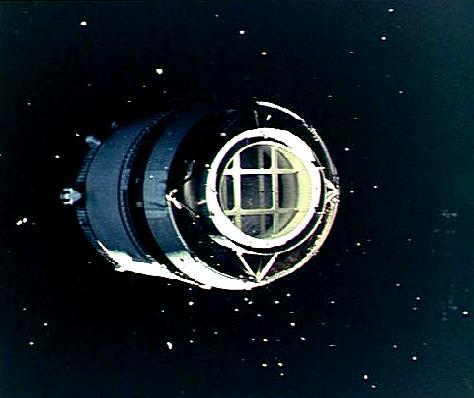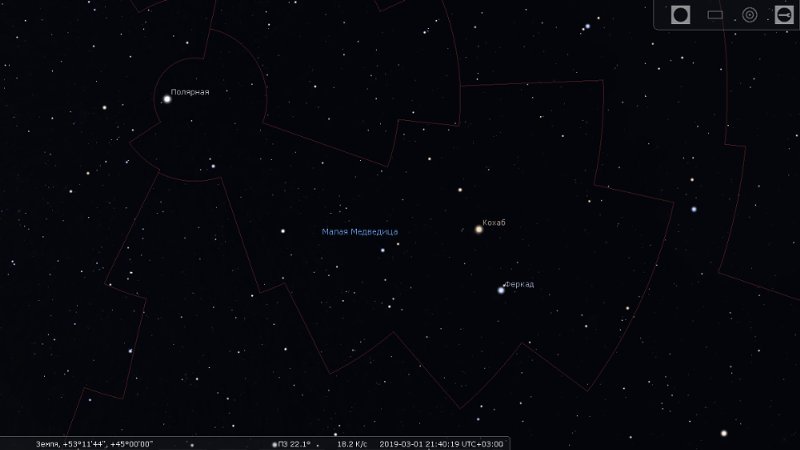 Реклама Google — средство выживания форумов :)
Реклама Google — средство выживания форумов :)
-
![[image]](https://www.balancer.ru/cache/sites/com/li/livejournal/pics/ic/photo_vlad/77546393/57382/128x128-crop/57382_800.jpg)
Немцы следили за высадкой на Луну
Теги:
Немцы следили за высадкой на Луну
В немецкой обсерватории имеются записи о высадке американцев на Луне
24.08.2006 Немецкие астрономы утверждают, что в Бохумской обсерватории содержатся оригинальные записи о высадке американских астронавтов на Луне.
Около десяти дней назад Национальное аэрокосмическое агентство Соединённых Штатов (NASA) сообщило об утере архива оригинальных видеоплёнок, на которых, среди прочего, была запечатлена знаменитая прогулка Нила Армстронга по поверхности естественного спутника нашей планеты. Эта запись демонстрировалась по американскому телевидению 20 июля 1969 года и впоследствии облетела весь мир.
Всего в период с 1969 по 1972 год на Луну были организованы шесть экспедиций на космических кораблях серии "Аполлон". Записи об этих миссиях изначально хранились в Национальном архиве США. Затем они были переданы NASA и, как выяснилось, бесследно исчезли.
На днях австралийский режиссёр Питер Клифтон сообщил, что в сиднейском архиве содержится копия фильма о высадке американских астронавтов на Луну. Клифтон запросил фрагменты фильма ещё в 1979 году для съёмок ролика об альбоме The Dark Side Of The Moon группы Pink Floyd. Ролик так и не был окончен, а материалы NASA долгое время пылились на полке.
Теперь записи о миссиях серии "Аполлон" обнаружились ещё в одном месте. Причём, как сообщает Independent Online со ссылкой на заявления руководителя Бохумской обсерватории Чило Элснера, в архиве этой организации хранятся не копии, а оригинальные материалы. Правда, видеороликами обсерватория не располагает. О высадке американских астронавтов на Луне имеются только аудиоданные, полученные при помощи радиотелескопа. Изображения в Бохумской обсерватории стали получать позднее - для миссий "Аполлон-15" и последующих. Тем не менее, даже аудиоинформация об историческом событии представляет огромный интерес.
Sternwarte Bochum beobachtet US-Apollo-Mondexperimente
Оказалось, что немцы приняли так же и видеосигнал неплохого качества, о чем указано в данной заметке.
Хм... Этому доказательству трудно что-либо противопоставить... Неужели и в самом деле американцы высаживались на Луну?
Оказалось, что немцы приняли так же и видеосигнал неплохого качества, о чем указано в данной заметке.
Хм... Этому доказательству трудно что-либо противопоставить... Неужели и в самом деле американцы высаживались на Луну?



Внимательно анализируя данный материал, обнаружил небольшую странность. Уважаемые форумчане, помогите понять, в чем дело!
На кадре из немецкого приема телесигнала, который они выложили в своей пдф-ке, отчетливо видны звезды:
В то же время, идентичный кадр, который мы видели в американских трансляциях, таковых звезд не содержит:
И, как все мы знаем в том числе от сайта скептик.нет, нет никакой возможности заснять на камеру одновременно Луну без передержки, и звезды! Так откуда же звезды проявились у немцев? И если их видели немцы, почему из точно того же сигнала их не увидели американцы? Непонятно...
На кадре из немецкого приема телесигнала, который они выложили в своей пдф-ке, отчетливо видны звезды:
В то же время, идентичный кадр, который мы видели в американских трансляциях, таковых звезд не содержит:
И, как все мы знаем в том числе от сайта скептик.нет, нет никакой возможности заснять на камеру одновременно Луну без передержки, и звезды! Так откуда же звезды проявились у немцев? И если их видели немцы, почему из точно того же сигнала их не увидели американцы? Непонятно...


Лунит> На кадре из немецкого приема телесигнала, который они выложили в своей пдф-ке, отчетливо видны звезды
Звезды?
Вообще-то звезды образуют созвездия. С Луны созвездия выглядят точно так же, как и с Земли.
Не будете ли любезны указать, какие именно созвездия изображены на указанном кадре?
Звезды?
Вообще-то звезды образуют созвездия. С Луны созвездия выглядят точно так же, как и с Земли.
Не будете ли любезны указать, какие именно созвездия изображены на указанном кадре?


Лунит> И если их видели немцы, почему из точно того же сигнала их не увидели американцы? Непонятно...
А ещё видны какие-то зигзагообразные полоски, которых нет на американском видео.
Проклятые пиндосы скрывают, что Луна покрыта зигзагообразными полосками, сволочи.
А ещё видны какие-то зигзагообразные полоски, которых нет на американском видео.
Проклятые пиндосы скрывают, что Луна покрыта зигзагообразными полосками, сволочи.


Y.K.> Не будете ли любезны указать, какие именно созвездия изображены на указанном кадре?
Я не специалист по созвездиям, но выглядят они именно как звезды потому что обладают разной магнитудой.
Другой немаловажный момент, как так получается, что немцам на 20-метровую антенну удалось поймать такую неплохую картинку, в то время как советские наблюдения (во всяком случае по свидетельству Молотова) ловили на 32-метровую антенну лишь невнятное нечто?
Я не специалист по созвездиям, но выглядят они именно как звезды потому что обладают разной магнитудой.
Другой немаловажный момент, как так получается, что немцам на 20-метровую антенну удалось поймать такую неплохую картинку, в то время как советские наблюдения (во всяком случае по свидетельству Молотова) ловили на 32-метровую антенну лишь невнятное нечто?


Y.K.>> Не будете ли любезны указать, какие именно созвездия изображены на указанном кадре?
Лунит> Я не специалист по созвездиям
Так какого же лешего про звезды пишете?
Лунит> но выглядят они именно как звезды потому что обладают разной магнитудой.
Офигеть как убедительно
Набросай случайных точек разной яркости - и вуаля! вылитые звезды!
Вот тут, например, звезд видимо-невидимо
Лунит> Другой немаловажный момент, как так получается, что немцам на 20-метровую антенну удалось поймать такую неплохую картинку, в то время как советские наблюдения (во всяком случае по свидетельству Молотова) ловили на 32-метровую антенну лишь невнятное нечто?
Не только в размере антенны счастье, а и в шумах приемных каскадов...
Лунит> Я не специалист по созвездиям
Так какого же лешего про звезды пишете?
Лунит> но выглядят они именно как звезды потому что обладают разной магнитудой.
Офигеть как убедительно

Набросай случайных точек разной яркости - и вуаля! вылитые звезды!
Вот тут, например, звезд видимо-невидимо

Лунит> Другой немаловажный момент, как так получается, что немцам на 20-метровую антенну удалось поймать такую неплохую картинку, в то время как советские наблюдения (во всяком случае по свидетельству Молотова) ловили на 32-метровую антенну лишь невнятное нечто?
Не только в размере антенны счастье, а и в шумах приемных каскадов...


Y.K.>> Не только в размере антенны счастье, а и в шумах приемных каскадов...
Лунит> И почему нашим с энтими самыми шумами не свезло? Или криворукие были?
Вопрос к Молотову. Он должен быть в курсе.
Лунит> И почему нашим с энтими самыми шумами не свезло? Или криворукие были?

Вопрос к Молотову. Он должен быть в курсе.


Y.K.>> Вопрос к Молотову. Он должен быть в курсе.
Лунит> Нет, у Молотова ни слова про шумы приемных каскадов. А вот у вас про них написано. Значит, вопрос к вам.
Значит, вопрос к тому, кто про эту приемную аппаратуру и ее характеристики знает.
Стало быть, никак не ко мне.
Лунит> Нет, у Молотова ни слова про шумы приемных каскадов. А вот у вас про них написано. Значит, вопрос к вам.
Значит, вопрос к тому, кто про эту приемную аппаратуру и ее характеристики знает.
Стало быть, никак не ко мне.


Y.K.>> Не будете ли любезны указать, какие именно созвездия изображены на указанном кадре?
Лунит> Я не специалист по созвездиям, но выглядят они именно как звезды потому что обладают разной магнитудой.
А вот в этом кино тоже звезды?
И магнитуда разная, и даже мерцают очень убедительно
(В районе 0:15)
Apollo 14 - 16-mm magazine 1215-A
Apollo 14, 16-mm magazine 1215-A. 00:13 Lunar Module 'Antares' is seen housed at the top of the Saturn V's S-IVB third stage. Taken from the Command Service Module 'Kitty Hawk' during the Transposition, Docking and Extraction exercise three hours and ten minutes into the flight. Detritus left over from the separation is still floating about.
Лунит> Я не специалист по созвездиям, но выглядят они именно как звезды потому что обладают разной магнитудой.
А вот в этом кино тоже звезды?
И магнитуда разная, и даже мерцают очень убедительно

(В районе 0:15)
Apollo 14 - 16-mm magazine 1215-A
Apollo 14, 16-mm magazine 1215-A. 00:13 Lunar Module 'Antares' is seen housed at the top of the Saturn V's S-IVB third stage. Taken from the Command Service Module 'Kitty Hawk' during the Transposition, Docking and Extraction exercise three hours and ten minutes into the flight. Detritus left over from the separation is still floating about.




AlexanderZh>> Например для информации.
Лунит> Ну так и есть:




Не знать как выглядит Большая Медведица- это ящетаю заявка на успех.
Лунит> Ну так и есть:




Не знать как выглядит Большая Медведица- это ящетаю заявка на успех.


Это сообщение редактировалось 01.03.2019 в 14:39
AlexanderZh>> Например для информации.
Лунит> Ну так и есть:
Погнулась о небесную ось.
Лунит> Ну так и есть:
Погнулась о небесную ось.


Ну, во-первых, будучи недовольными качеством картинки с луны с "первого шага", американцы непрерывно экспериментировали с улучшением.
"After the less-than-spectacular performance of the lunar color camera on Apollo 12 and 14, NASA investigated ways of improving the television images from the surface of the Moon on the remaining flights. While the new color camera planned for the RCA built Ground-Com-manded Television Assembly (GCTA) had the promise of far better lunar surface color televi-sion performance, there was still the problem of the presence of voice and telemetry subcarriers right in the middle of the video bandpass at 1.024 MHz and 1.25 MHz. This was unavoidable because the Lunar Module and Rover had only one transmitter each (2282.5 and 2265.5 MHz) to send voice, data and TV signals back to the Earth. On the other hand, the Command and Service Module had separate voice/data and television transmitters (2287.5 and 2277.5 MHz) for this and did not have this interference problem. The interfering subcarriers were removed by the use of a simple low-pass filter during the Apollo 12 and 14 mis-sions. This effectively limited the upper video bandwidth to 750 kHz, resulting in a considerable loss of picture detail."
Ну и на 14-м тоже не получилось. но после него:
"After a series of tests using off-the-shelf test equipment, Goldstone demonstrated a subcarrier cancellation process that removed the offending voice and telemetry signals from the LM downlink by reconstructing the two subcarri-ers and adding equal and opposite versions to the combined signal. Dick Nafzger, the GSFC MSFN television systems engineer, worked with the Applied Physics Laboratory MSFN support personnel, who took the Goldstone concept and implemented it into hardware for the three 26-meter MSFN stations"
И эта доработка (по сути, "работа на одной боковой полосе") реально улучшило качество изображения, и использовалась в последующих миссиях:
"The Apollo subcarrier cancellation unit was used on Apollo 15 through 17. That capability was developed at Goldstone and implemented by the Applied Physics Laboratory for Goddard Space Flight Center. This ability to remove the interfering subcarriers from the Lunar Module and Rover downlinks was a key factor in the production of broadcast-quality color television images."
В том числе и в миссии А-16, о которой идет речь в немецкой статье.
ну и в результате получилось "Since Spain did not have one of the large 64-meter antennas most TV coverage was scheduled through Goldstone and Australia. There was some coverage through the Madrid 26-meter MSFN station on occasion. The first pictures broadcast were from the Madrid station providing Image Transform with a real challenge. Yet these pictures were remarkably better than those from any of the prior Apollo missions. The images from the Goldstone station were bordering on what was considered at the time as studio quality."
Т.е. Мадрид принимал на 26-метровую антенну сигнал с хорошим качеством, а прием Голдстоуном был "с качеством, считавшимся в то время студийным".
Кроме этого, в А-16 и А-7 была уже постобработка на земле для телевизионной трансляции (молодой американский стартап вовремя предложил свои услуги - всего-то за 2 месяца до пуска А-16). Но эта история никак не относится к приему немцами.
Впрочем, что меня поразило в немцах - то, что у них параметрика вроде как неохлаждаемая. Но надо посерьезней попереводить...
Я умышленно не стал переводить - художественно мне долго, гуглопереводчики порой такие перлы выдают, что почти как Лунит... Лучше читайте оригинал. А кому сложно - берите оригинал, сами суйте в транслятор, и корректируйте переведенное по оригиналу... (ну, поймете, что Honeysuckle - это станция ДСН а не жимолость, и т.п.)
"After the less-than-spectacular performance of the lunar color camera on Apollo 12 and 14, NASA investigated ways of improving the television images from the surface of the Moon on the remaining flights. While the new color camera planned for the RCA built Ground-Com-manded Television Assembly (GCTA) had the promise of far better lunar surface color televi-sion performance, there was still the problem of the presence of voice and telemetry subcarriers right in the middle of the video bandpass at 1.024 MHz and 1.25 MHz. This was unavoidable because the Lunar Module and Rover had only one transmitter each (2282.5 and 2265.5 MHz) to send voice, data and TV signals back to the Earth. On the other hand, the Command and Service Module had separate voice/data and television transmitters (2287.5 and 2277.5 MHz) for this and did not have this interference problem. The interfering subcarriers were removed by the use of a simple low-pass filter during the Apollo 12 and 14 mis-sions. This effectively limited the upper video bandwidth to 750 kHz, resulting in a considerable loss of picture detail."
Ну и на 14-м тоже не получилось. но после него:
"After a series of tests using off-the-shelf test equipment, Goldstone demonstrated a subcarrier cancellation process that removed the offending voice and telemetry signals from the LM downlink by reconstructing the two subcarri-ers and adding equal and opposite versions to the combined signal. Dick Nafzger, the GSFC MSFN television systems engineer, worked with the Applied Physics Laboratory MSFN support personnel, who took the Goldstone concept and implemented it into hardware for the three 26-meter MSFN stations"
И эта доработка (по сути, "работа на одной боковой полосе") реально улучшило качество изображения, и использовалась в последующих миссиях:
"The Apollo subcarrier cancellation unit was used on Apollo 15 through 17. That capability was developed at Goldstone and implemented by the Applied Physics Laboratory for Goddard Space Flight Center. This ability to remove the interfering subcarriers from the Lunar Module and Rover downlinks was a key factor in the production of broadcast-quality color television images."
В том числе и в миссии А-16, о которой идет речь в немецкой статье.
ну и в результате получилось "Since Spain did not have one of the large 64-meter antennas most TV coverage was scheduled through Goldstone and Australia. There was some coverage through the Madrid 26-meter MSFN station on occasion. The first pictures broadcast were from the Madrid station providing Image Transform with a real challenge. Yet these pictures were remarkably better than those from any of the prior Apollo missions. The images from the Goldstone station were bordering on what was considered at the time as studio quality."
Т.е. Мадрид принимал на 26-метровую антенну сигнал с хорошим качеством, а прием Голдстоуном был "с качеством, считавшимся в то время студийным".
Кроме этого, в А-16 и А-7 была уже постобработка на земле для телевизионной трансляции (молодой американский стартап вовремя предложил свои услуги - всего-то за 2 месяца до пуска А-16). Но эта история никак не относится к приему немцами.
Впрочем, что меня поразило в немцах - то, что у них параметрика вроде как неохлаждаемая. Но надо посерьезней попереводить...
Я умышленно не стал переводить - художественно мне долго, гуглопереводчики порой такие перлы выдают, что почти как Лунит... Лучше читайте оригинал. А кому сложно - берите оригинал, сами суйте в транслятор, и корректируйте переведенное по оригиналу... (ну, поймете, что Honeysuckle - это станция ДСН а не жимолость, и т.п.)


Это сообщение редактировалось 01.03.2019 в 15:48
normalized
новичок
Ос> Не знать как выглядит Большая Медведица- это ящетаю заявка на успех.
Он про малую, вроде.
Но и в этом случае продемонстрировать соответствие шума-"звезд" и карты звездного неба как полагается у него не получается (созвездие кривое, не соответствует. Остальные "звезды" тоже)
Он про малую, вроде.
Но и в этом случае продемонстрировать соответствие шума-"звезд" и карты звездного неба как полагается у него не получается (созвездие кривое, не соответствует. Остальные "звезды" тоже)




Лунит> На кадре из немецкого приема телесигнала, который они выложили в своей пдф-ке, отчетливо видны звезды:
Интересно, тупость знает, какими должны быть звёзды, чтобы проявиться на подобных кадрах? Я, конечно, не специалист, но по моим прикидкам их светимость должна быть не ниже, чем у Луны...


Но это ничего. Чем ты тупее, тем проще опровергать. Не обращай внимания.
Интересно, тупость знает, какими должны быть звёзды, чтобы проявиться на подобных кадрах? Я, конечно, не специалист, но по моим прикидкам их светимость должна быть не ниже, чем у Луны...



Но это ничего. Чем ты тупее, тем проще опровергать. Не обращай внимания.

Лунит> Внимательно анализируя данный материал, обнаружил небольшую странность. Уважаемые форумчане, помогите понять, в чем дело!
Все дело - в известной кислоте. Это давно уже понятно...
Лунит> На кадре из немецкого приема телесигнала, который они выложили в своей пдф-ке, отчетливо видны звезды:
Лунит> В то же время, идентичный кадр, который мы видели в американских трансляциях, таковых звезд не содержит:
"While the Apollo 15 lunar surface color television was very impressive, there was yet another technological breakthrough that would improve the quality of the images from the Moon still further. In spite of the use of the two big 64-meter dishes on the Earth, a slight amount of video noise (or snow) was present in the lunar surface broadcasts. This was caused by the use of a wide 5 MHz video bandwidth on the frequency modulated S-band downlink. That reduced the overall circuit margin experienced during earlier Apollo missions.
Image Transform, a small North Hollywood start-up company, had opened its doors only a few months before the Apollo 16 mission to make video-to-film transfers. The company developed the first practical temporal noise reduction system to enable them to clean up the video before making new films. John Lowry, the founder of Image Transform, used their new image proc-essing system to improve a sample recording of the Apollo 15 television downlink. John was so encouraged by this that he contacted NASA to tell them about what they had done. In February of 1972, two months before the Apollo 16 launch, John Lowry visited Col. James McDivitt at MSC to show him the results of the Image Transform process. John demonstrated about two minutes of before and after processing of three scenes from the Apollo 15 lunar video. As a direct result of this demonstration Image Transform was contracted to process and clean up the lunar surface video for Apollo 16."
Это как раз то, что я не стал рассказывать подробней в предыдущем посте. аддитивный шумодав изображения.
Лунит> И, как все мы знаем в том числе от сайта скептик.нет, нет никакой возможности заснять на камеру одновременно Луну без передержки, и звезды! Так откуда же звезды проявились у немцев? И если их видели немцы, почему из точно того же сигнала их не увидели американцы? Непонятно...
Как раз понятно. Всем нормальным людям понятно. которые держали в руках пленочный фотоаппарат, которые держали в руках кинокамеру и видеокамеру тех лет.
причина не в скептик.нет, не в американцах, ни в немцах... причина - в кислоте...
Все дело - в известной кислоте. Это давно уже понятно...
Лунит> На кадре из немецкого приема телесигнала, который они выложили в своей пдф-ке, отчетливо видны звезды:
Лунит> В то же время, идентичный кадр, который мы видели в американских трансляциях, таковых звезд не содержит:
"While the Apollo 15 lunar surface color television was very impressive, there was yet another technological breakthrough that would improve the quality of the images from the Moon still further. In spite of the use of the two big 64-meter dishes on the Earth, a slight amount of video noise (or snow) was present in the lunar surface broadcasts. This was caused by the use of a wide 5 MHz video bandwidth on the frequency modulated S-band downlink. That reduced the overall circuit margin experienced during earlier Apollo missions.
Image Transform, a small North Hollywood start-up company, had opened its doors only a few months before the Apollo 16 mission to make video-to-film transfers. The company developed the first practical temporal noise reduction system to enable them to clean up the video before making new films. John Lowry, the founder of Image Transform, used their new image proc-essing system to improve a sample recording of the Apollo 15 television downlink. John was so encouraged by this that he contacted NASA to tell them about what they had done. In February of 1972, two months before the Apollo 16 launch, John Lowry visited Col. James McDivitt at MSC to show him the results of the Image Transform process. John demonstrated about two minutes of before and after processing of three scenes from the Apollo 15 lunar video. As a direct result of this demonstration Image Transform was contracted to process and clean up the lunar surface video for Apollo 16."
Это как раз то, что я не стал рассказывать подробней в предыдущем посте. аддитивный шумодав изображения.
Лунит> И, как все мы знаем в том числе от сайта скептик.нет, нет никакой возможности заснять на камеру одновременно Луну без передержки, и звезды! Так откуда же звезды проявились у немцев? И если их видели немцы, почему из точно того же сигнала их не увидели американцы? Непонятно...
Как раз понятно. Всем нормальным людям понятно. которые держали в руках пленочный фотоаппарат, которые держали в руках кинокамеру и видеокамеру тех лет.
причина не в скептик.нет, не в американцах, ни в немцах... причина - в кислоте...


 Реклама Google — средство выживания форумов :)
Реклама Google — средство выживания форумов :)
" Увеличенное фото показывает много звездочек!"©

"Даже виден инопланетный корабль алиен-класса. Alien: Evolution - IGN - стрелочка с вопросом "?" ближе к центру.
Alien: Evolution - IGN - стрелочка с вопросом "?" ближе к центру.  )"©
)"©


OFF: НАСА определило 6 кеплеровых элементов орбиты по УКВ-дальномеру и секстанту
OFF: НАСА определило 6 кеплеровых элементов орбиты по УКВ-дальномеру и секстанту // www.forum.mista.ru"Даже виден инопланетный корабль алиен-класса.
 Alien: Evolution - IGN - стрелочка с вопросом "?" ближе к центру.
Alien: Evolution - IGN - стрелочка с вопросом "?" ближе к центру.  )"©
)"©
OFF: НАСА определило 6 кеплеровых элементов орбиты по УКВ-дальномеру и секстанту
OFF: НАСА определило 6 кеплеровых элементов орбиты по УКВ-дальномеру и секстанту // www.forum.mista.ru

Copyright © Balancer 1997..2019
Создано 24.08.2006
Связь с владельцами и администрацией сайта: anonisimov@gmail.com, rwasp1957@yandex.ru и admin@balancer.ru.
Создано 24.08.2006
Связь с владельцами и администрацией сайта: anonisimov@gmail.com, rwasp1957@yandex.ru и admin@balancer.ru.
 аФон+
аФон+

 инфо
инфо инструменты
инструменты Лунит
Лунит
 Xan
Xan

















